|
BEIJING (Day 1 - part 1)
In the morning, a large tour bus picked us up at the Jiangxi Grand Hotel. Mark (or Mingong) was our national guide; Tony was our local guide, and Mr. Li was our driver. Our first stop was the Summer Palace on Kunming Lake. It was too cold and windy for a boatride so we only did the walking tour.
Beijing is currently China's second largest city with 17 million people and stretches for 85 miles. It served as one of the country's four ancient capitals for eight centuries. Its name means Northern Capital, although it has known many names over its history such as Zhongdu, Dadu and Beiping (meaning Northern Peace). Another name in English is Peking. This is not a case of the capital changing names, but rather that in 1949, the Chinese government adopted the pinyin transliteration method to write all proper names using the Latin alphabet. And so, many Chinese words suddenly had their English spelling changed.

Beijing
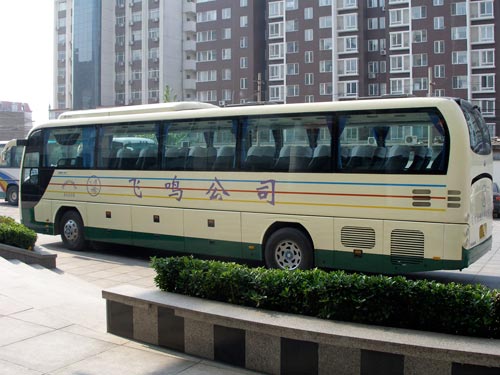
Our giant tour bus
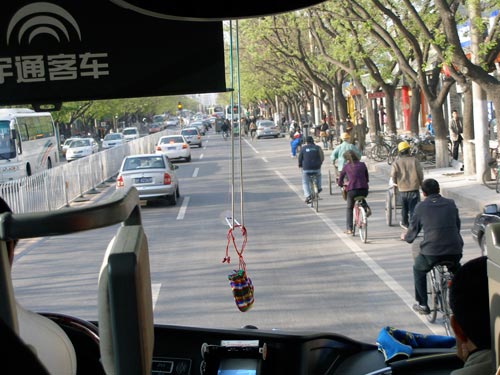
While bikes are still common, their numbers have drastically reduced from 20 years ago... being steadily replaced by cars.
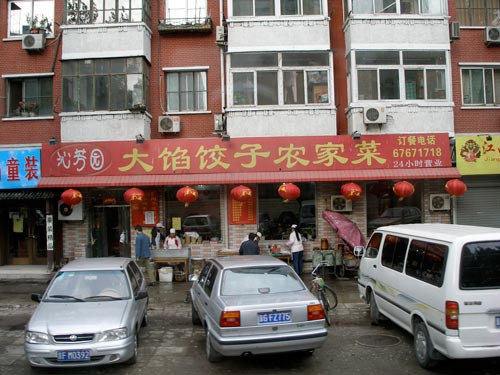
Typical street scene
The Summer Palace was seasonal residence of the royal family from the Forbidden City. The palace lies about 12 miles northwest of the center of Beijing and is the largest imperial garden in existence in China, covering an area of 10 square miles and including more than 3,000 buildings. In 1924, the palace turned from an imperial garden to a public park. The palace of today looks more or less tha same as when it was rebuilt in 1903.
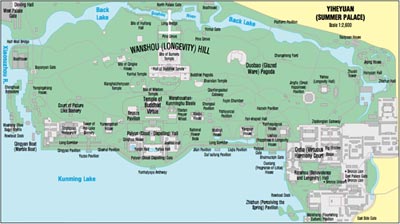
Click to enlarge map
The palace has a history of over 800 years. Originally, the Golden Hill Palace was built here in 1153. Large scale construction took place between 1750 and 1764, during the reign of Emperor Qianlong of the Qing Dynasty. With supreme power and large sums of money, the emperor summoned skillful and ingenious artisans from all over the country to carry out this construction work in honor of his mother's birthday. After 15 years and one-seventh of the nation's annual revenue spent, the Garden of Clear Ripples was completed.
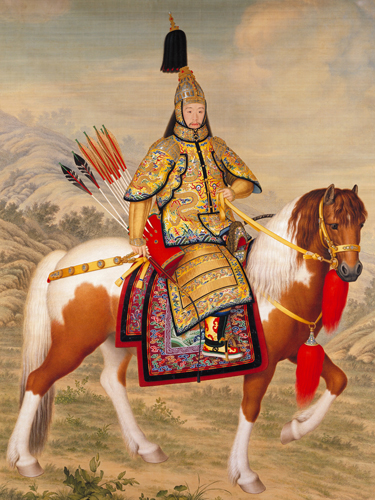
"The Qianlong Emperor in Armor on Horseback" by Giuseppe Castiglione (1688 - 1766), an Italian Jesuit missionary and court painter in China
In 1860, the palace was burned down by Anglo-French allied forces during the Second Opium War. In 1888, Empress Dowager Cixi reconstructed it, giving it its current name, Yihe Yuan (which literally means Gardens of Nurtured Harmony). She used it as a summer resort and diverted 30 million taels of silver (a tael weighed around 40 grams) that were designated for the Chinese navy into its reconstruction and enlargement.
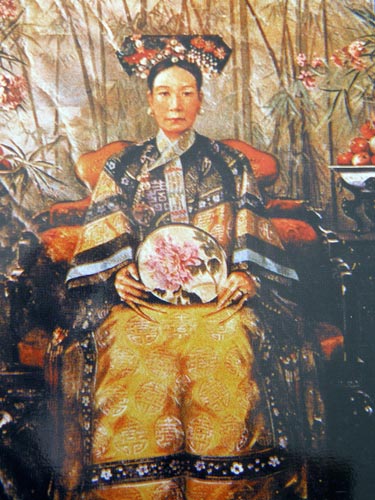
Empress Dowager Cixi (1835 - 1908) is frequently called the Dragon Lady, the dragon being a symbol of power.
Empress Dowager Cixi is often known as the West Dowager Empress (a dowager is a widow who holds a title or property, or dower, derived from her deceased husband). Coming from an ordinary family, Yehenara (as she was called then) was selected by the Xianfeng Emperor as a concubine in 1851.
When the emperor died in 1861, she successfully staged a coup (the Xinyou Palace Coup) with the help of Prince Gong, had the opposing princes commit suicide and their leader beheaded, and succeeded in securing power into her hands and those of the empress consort, the Empress Dowager Ci'an (who then became known as the East Dowager Empress, based on where she dwelled in the Forbidden City).
The Empress Dowager Ci'an had become a concubine of the crown prince (the future Xianfeng Emperor) in the late 1840's. In 1950, both his principal wife and the previous emperor died, suddenly making him an emperor without an empress consort. Niuhuru (as she was called then) filled the role in 1852. Unfortunately she was unable to produce a male heir, and so it was Yehenara who gave the emperor a son in 1856.
Tongzhi was only 5 years old when his father, the emperor, died, so it was not very hard for his mother (after the coup) to rule in his name. She continued to rule for 48 years after the emperor's death, first through her son, Emperor Tongzhi (1862 - 1874), and then through her nephew, Guangxu (1875 - 1908), both of whom unsuccessfully attempted to rule in their own right.

Empress Dowager Ci'an (1837 - 1881)
In former times, it was not uncommon for both men and women to have their name changed as the result of a status change. For example: Cixi's original name at her birth is still unknown. At her entrance in the Forbidden City, she was recorded as Lady Yehenara (her clan's name). When she was made a concubine of the 5th rank, she was given the name Lan (Orchid). When she was promoted to concubine of the 4th rank, her name was changed to Yi (good, exemplary, or virtuous). Upon the death of the emperor, she became Empress Dowager Cixi (meaning motherly and auspicious). At her death in 1908, she was given a posthumous (or respectful) name which reads "The Empress who is Admirably Filial, Initiates Kindness, with Blessed Health, Manifests Much Contentment, Solemn Sincerity, with Longevity, Provides Admiration Prosperously, Reveal Adoration, Prosperous with a Merry Heaven, with a Holy Appearance." The short form is Empress Xiaoqin Xian. Often times, a woman never even used to get a name until she was married. For example, she would simply be referred to as First Daughter.
Kunming Lake was made from two smaller bodies of water, Wengshan Pond and Xihu Lake. They had been used as sources of water both for the city and irrigation of fields for over 3,500 years. During the construction commissioned by the Qianlong Emperor, the lake area was extended by a workforce of almost 10,000 laborers. The lake is actually fairly shallow, with an average depth of only 5 feet. In summer it is used for boating, and in winter for ice skating.
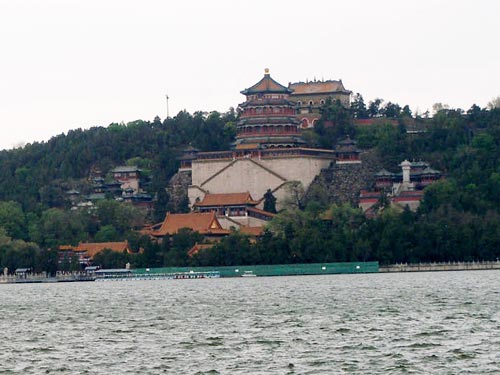
A view across the lake at the palace complex built on Wanshou (Longevity) Hill, which is almost 200 feet high. The large three-story octahedral building in the middle is the Temple of Buddhist Virtue.
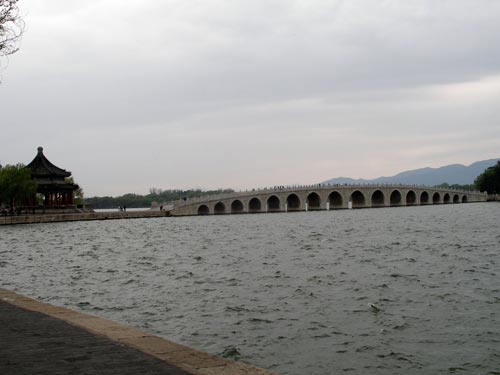
17-Arch Bridge (Shiqi Kong Qiao)
The largest bridge on the lake is the 17-Arch Bridge. It connects to Nanhu (South Lake or Dragon) Island, which represents a mythical land where the immortals lived called Penglai Island. The bridge is a copy of the Marco Polo Bridge (also known as Lugou Bridge) which is located in southwestern Beijing. Lugou Bridge is one of earliest segmented stone arch bridges, and was recorded in the travelogue of Marco Polo, an Italian traveler who went to China during the Yuan Dynasty (1271 - 1368).
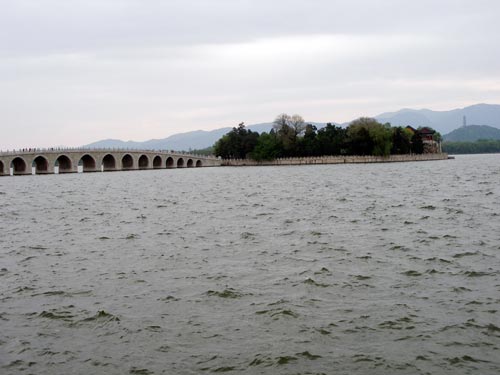
Nanhu island is said to protect the water.
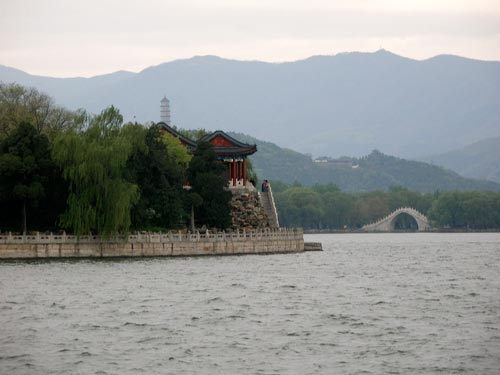
There are several temples on the island.
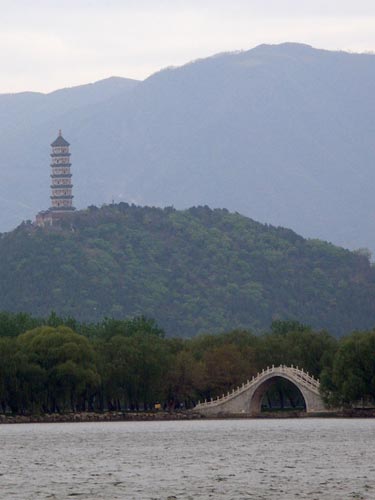
Yudai Qiao (Jade Belt Bridge). Built during Emperor Qianlong's reign, this bridge was said to resemble a jade belt because of it grey and white marbles.
Wenchang Ge (Wechang Tower Gate)
The largest of the six fortress gates in the palace, Wechang Ge was first built in 1750 and later rebuilt in 1860 after it had burned down. Wenchang (or Wen Ch'ang) is the Taoist 'God of Wisdom, Literature, Books and Writing.' He started out as a mortal by the name of Zhang Ya Zi, a Zhou Dynasty sage who could predict the future and perform great transformations. With his superior knowledge of The Way (Tao), he was elevated to heaven and now sits enthroned in the Big Dipper.
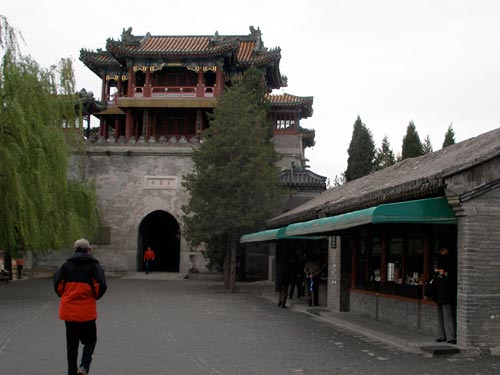
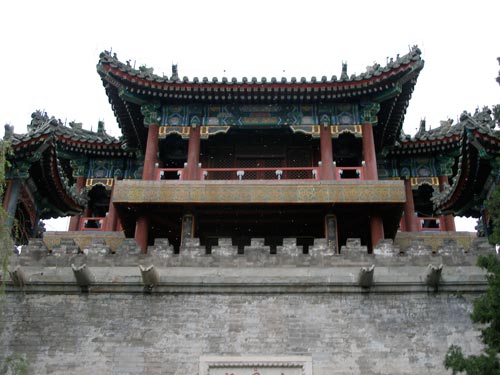
The waterfront
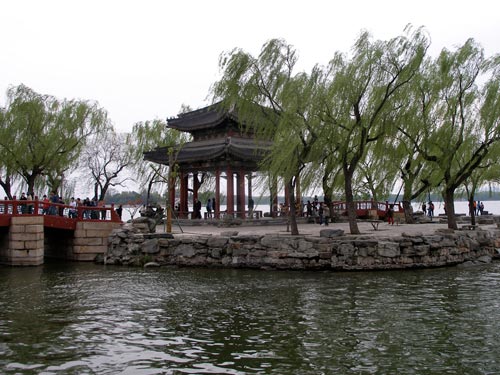
The Zhichun Ting (Heralding Spring) Pavillion. The pavillion sits on a small island beside Kunming Lake's east bank. Facing the sun, it gets a privileged view of spring's arrival.
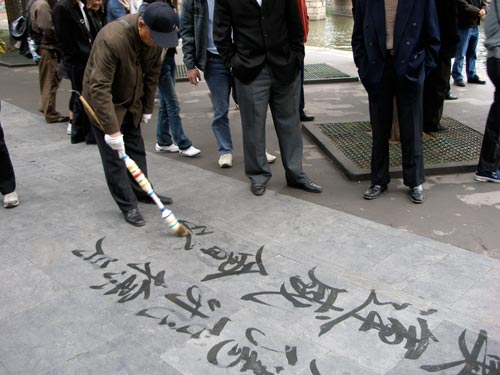
A man writes a poem on the sidewalk in water with a large calligraphy brush.
Ground calligraphy or water-writing first started appearing about 10 years. Some praise it as an innovative branch of Chinese calligraphy, others regard it as a cultural activity for the masses. Either way, the poem, rhyme or philosophical passage lingers on the pavement for only a few moments before drying up and leaving place for the next thought or impression.
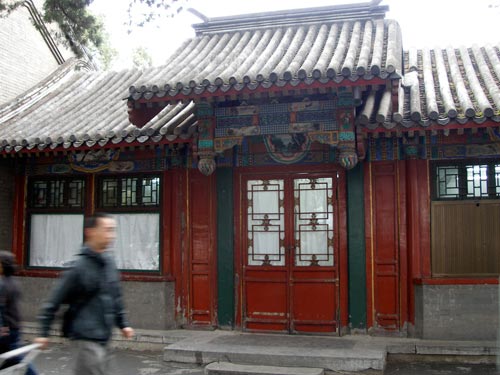
A lakeside building
The courtyards
Yulan Tang (Hall of Jade Ripples)
Originally built in 1750 with passageways in all directions, the hall was burned down in 1860. It was reconstructed in 1886 as Emperor Guangxu's living quarters. Even though Guangxu was emperor, he was contolled by his aunt Empress Dowager Cixi, who had placed him on the throne at four years old in order to continue wielding power behind the scenes.
In 1898, when he was 19 years old, the empress relinquished some power to him. He then began a movement (known as the 100 Days Reform Movement) with the aim of reforming outdated laws. It was short-lived, ending in a coup by powerful conservative opponents led by the empress. She then had six of the reformists beheaded and the emperor placed under house arrest which lasted for 10 years. All the back doors were sealed and the courtyard was blocked off by a brick wall.
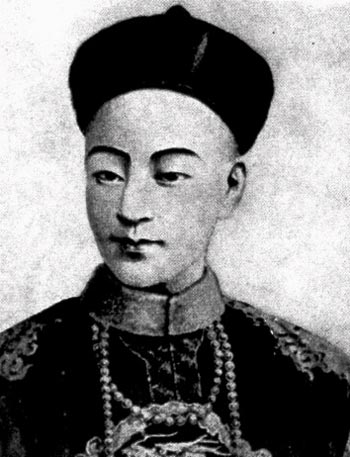
Guangxu, the imprisoned emperor
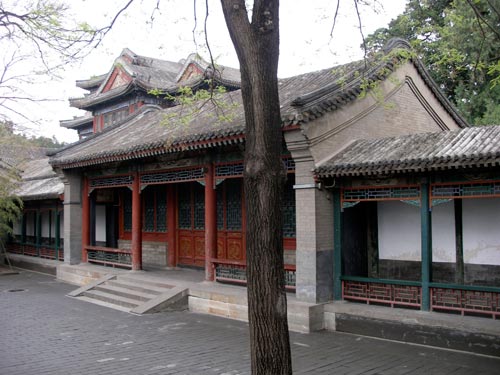
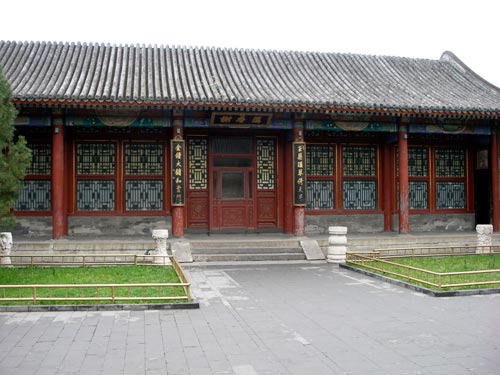
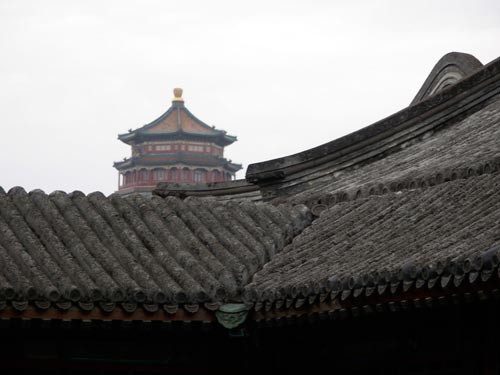
A glimpse over the roof at the Temple of Buddhist Virtue.
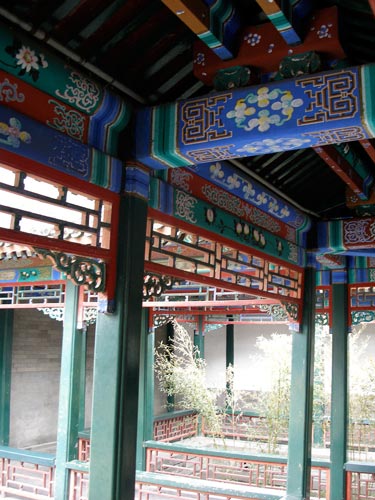
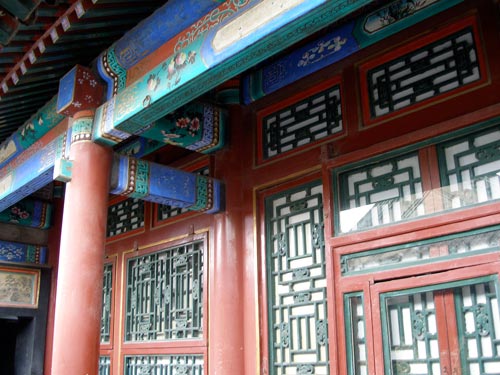
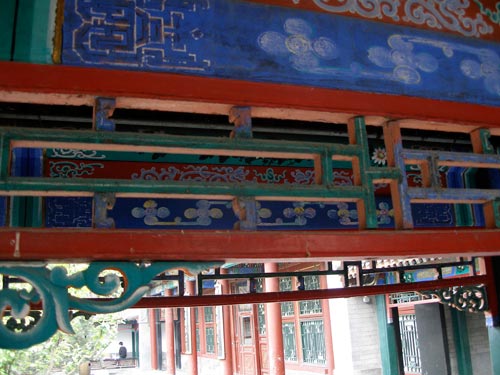
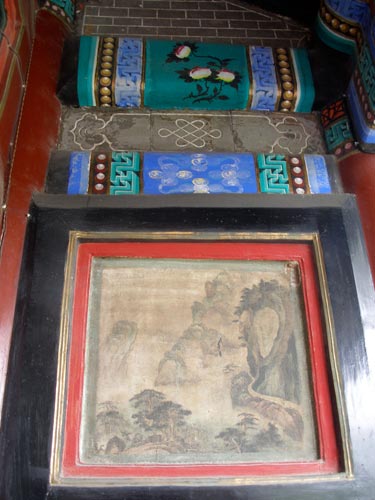
Yiyun means the collection of books. Rebuilt in 1886, these were the living quarters for Empress Long Yu when she, as Emperor Guangxu's wife, stayed here. As niece of the Empress Dowager Cixi, she had the title of Empress bestowed on her in 1889. When Emperor Guangxu and the Empress Dowager Cixi died of ill health in 1908 and Puyi became emperor at the age of two, she was elevated to the position of Empress Dowager, handling state affairs on his behalf. In this capacity, she issued an order to give up the throne in 1912, thus ending the reign of the emperors forever.
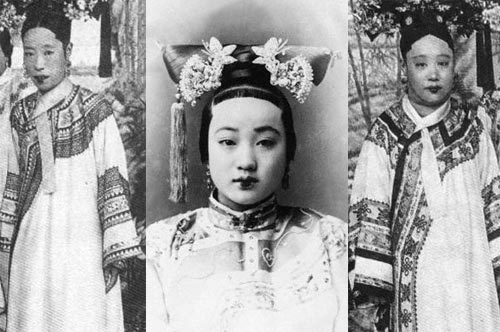
Empress Long Yu (originally Yehenara Jingfen), Imperial Consort Zhen and her older sister Imperial Consort Jin (both called Lady Tatala)
The Guangxu Emperor had three wives in total. His principal wife was the Long Yu Empress, while his two imperial consorts were the sisters Zhen and Jin. Guangxu was forced to marry his cousin who was two years his senior by the Empress Dowager Cixi because she wanted to strengthen the power of her own family. However, Guangxu detested Long Yu and spent most of his time with his favorite consort, Zhen. Zhen urged the emperor to be more independent and also supported the new political reforms. When Cixi learned that she had secretly cooperated with the emperor's attempt to gain power from her, she had her drowned in a palace well in 1900 at 24 years of age.
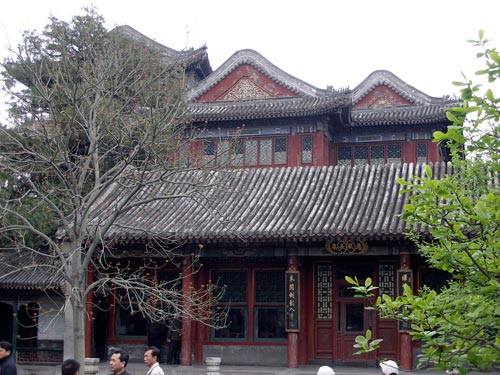
The houses are constructed in a typical Siheyuan-Style (a kind of traditional Chinese structure).
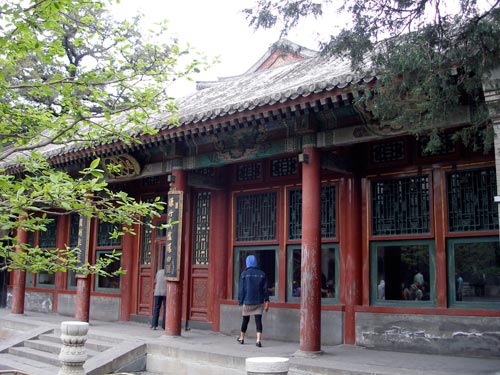
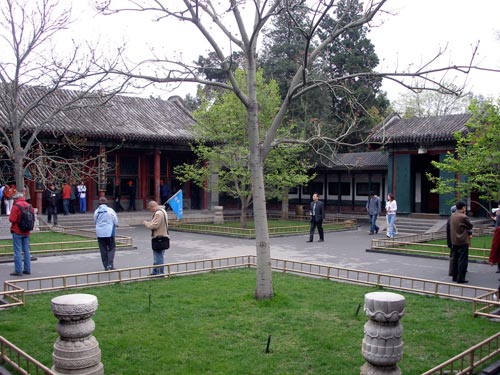
Long Yu could not get love from her emperor husband and had to spend most of her lonely days in this courtyard.
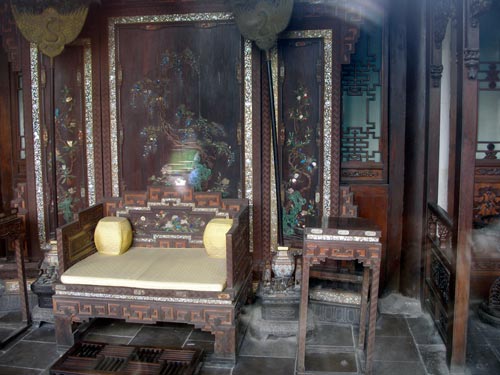
All the furniture is encased by precious stones and bamboo filament.
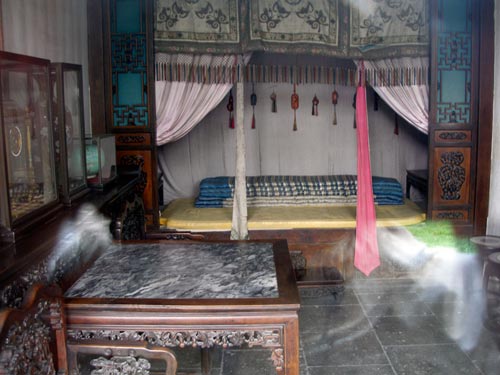
A bed
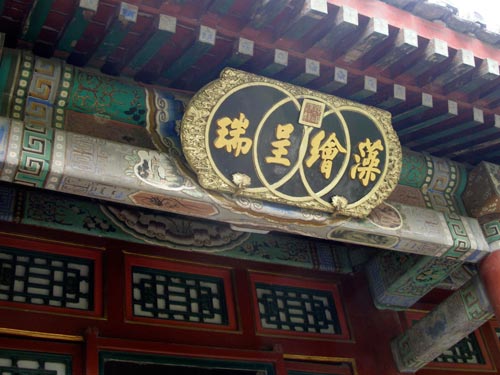
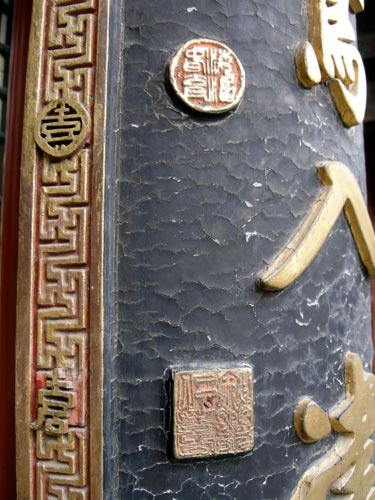
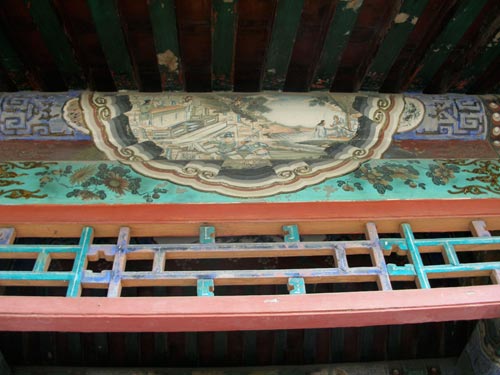
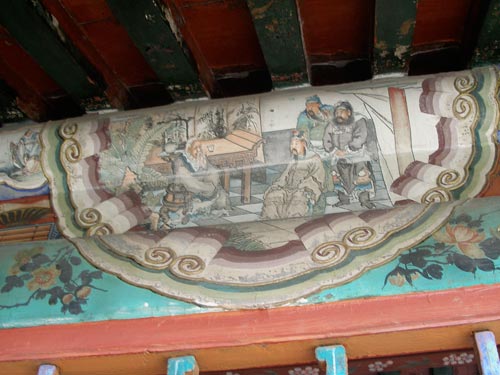
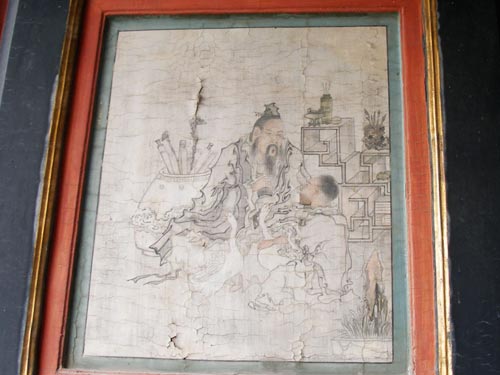
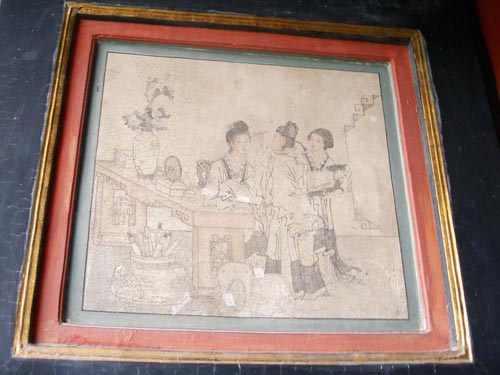
Hall of Happiness and Longevity (Leshou Tang)
This hall, reconstructed in 1886, served as the living quarters for Empress Dowager Cixi. At mealtime, eunuchs would prepare a gigantic table and the empress would dine on 128 courses. Because of this, more than 1,800 tales of silver would be spent each month on meals. The empress lived to be 74 years old.
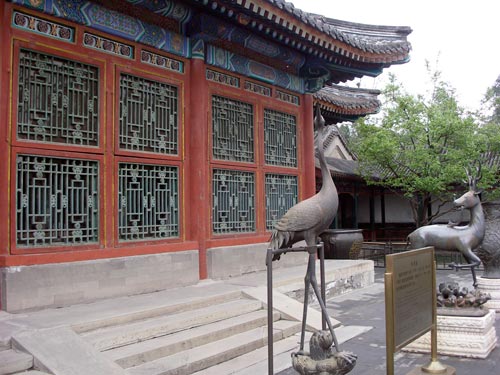
Bronze cranes, deer and vases symbolize universal peace.

|
|

